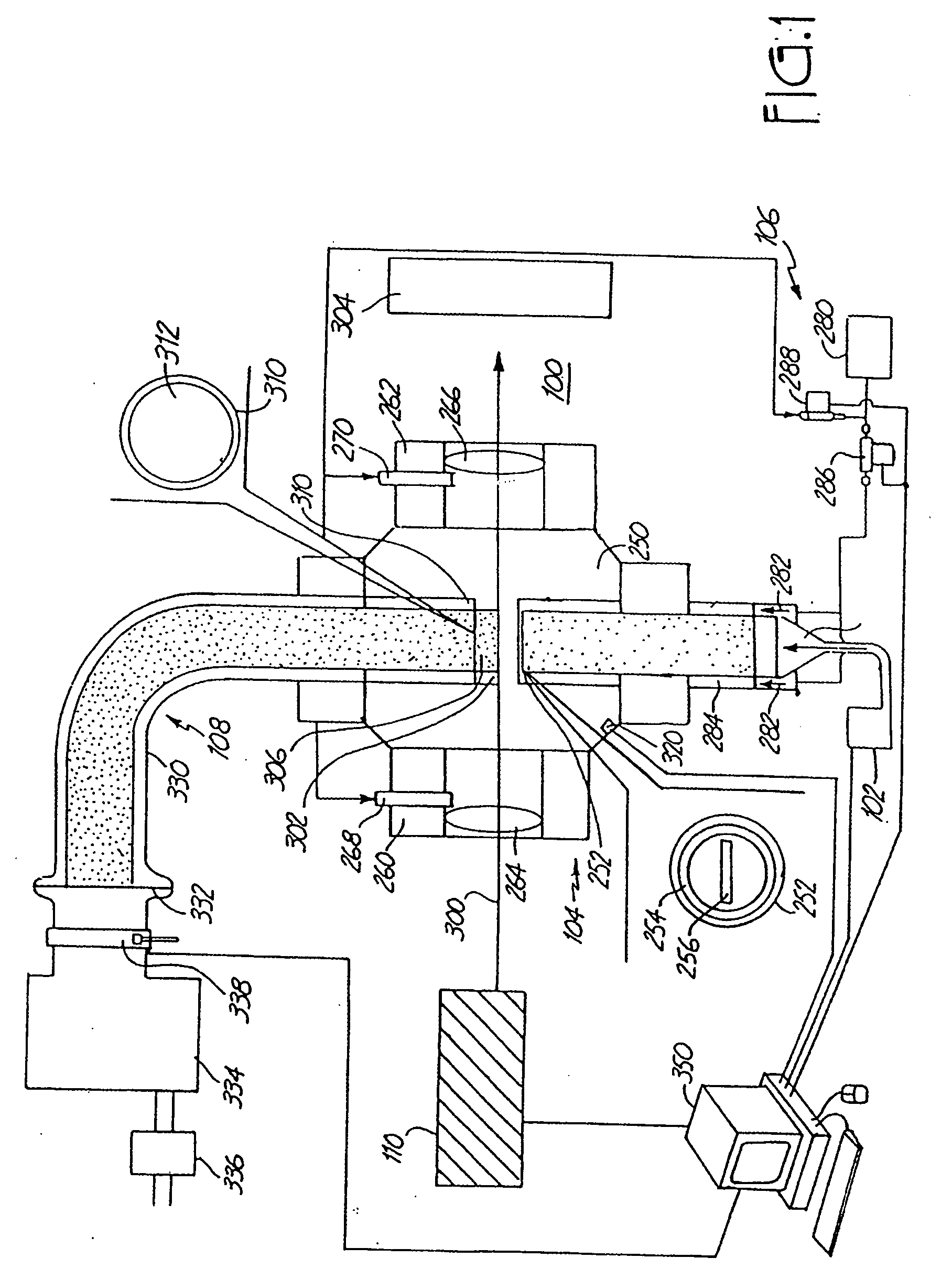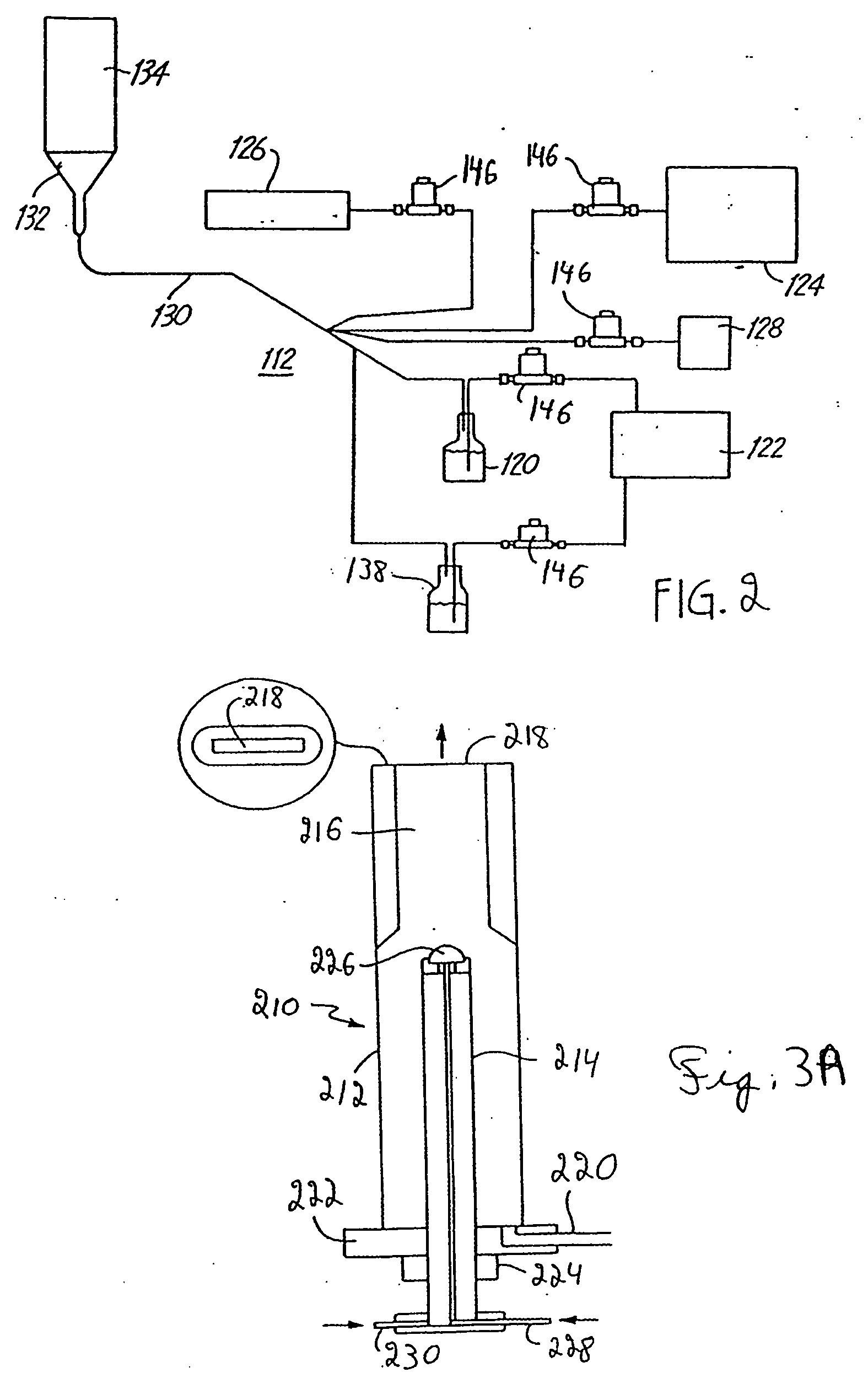Nanoparticle production and corresponding structures
a nanoparticle and nanoparticle technology, applied in the direction of phosphorus compounds, vanadium oxides, zinc oxides/hydroxides, etc., can solve the problem of individual components integrated in the device shrinking in siz
- Summary
- Abstract
- Description
- Claims
- Application Information
AI Technical Summary
Benefits of technology
Problems solved by technology
Method used
Image
Examples
example 1
Single Phase V2O5
[0358] The synthesis of V2O5 described in this example was performed by laser pyrolysis. The VOCl3 (Strem Chemical, Inc., Newburyport, Mass.) precursor vapor is carried into the reaction chamber by bubbling Ar gas through the VOCl3 liquid stored in a container at room temperature. The reactant gas mixture containing VOCl3, Ar, O2 and C2H4 is introduced into the reactant gas nozzle for injection into the reactant chamber. The reactant gas nozzle had an opening with dimensions as specified in Table 1. C2H4 gas acts as a laser absorbing gas. Argon was used as an inert gas.
[0359] The synthesized vanadium oxide nanoscale particles can be directly handled in the air. The production rate was typically about 5-10 g / hour of nanoparticles. Based on the teachings herein both above and in this example, the particles described in this example can be produced with equivalent properties in appropriate apparatuses and at appropriate conditions at rates in the range(s) of at least...
example 2
Single Phase VO2
[0363] These particles were produced using a similar laser pyrolysis set up as described in Example 1. The reactant gas nozzle had dimensions ⅝ in× 1 / 16 in. For the production of VO2, C2H4 was bubbled through the VOCl3 liquid precursor at room temperature. Representative reaction conditions for the production of this material are described in Table 2.
TABLE 2PhaseVO2VO2VO1.27Crystal StructureMonoclinicMonoclinicTetragonalBattery Capacity (mAh / g)249118.4Pressure (Torr)320127200Argon - Win (sccm)700700700Argon - Sld. (slm)5.60.982.8Ethylene (sccm)460268402Carrier Gas (sccm)460(Ethyl.)676(Ar)402(Ethyl.)Oxygen (sccm)36200196Laser Output (watts)96220100
[0364] An x-ray diffractogram of representative product nanoparticles is shown in FIG. 30. Clear diffraction peaks corresponding to a monoclinic crystalline structure are visible. The identified structure from the diffractogram is almost identical to that of the corresponding bulk material, which has larger particle sizes...
example 3
Single Phase VO1.27
[0366] The experimental arrangement for the production of VO1.27 is the same as that described in Example 2. Representative conditions used to produce these particles are given in Table 2, above. Based on the teachings herein both above and in this example, the particles described in this example can be produced with equivalent properties in appropriate apparatuses and at appropriate conditions at rates in the range(s) of at least about 35 grams per hour and at higher rates described above.
[0367] The x-ray diffractogram for this material is shown in FIG. 34, and is characteristic of crystalline VO1.27 material.
PUM
| Property | Measurement | Unit |
|---|---|---|
| Fraction | aaaaa | aaaaa |
| Fraction | aaaaa | aaaaa |
| Fraction | aaaaa | aaaaa |
Abstract
Description
Claims
Application Information
 Login to View More
Login to View More - R&D
- Intellectual Property
- Life Sciences
- Materials
- Tech Scout
- Unparalleled Data Quality
- Higher Quality Content
- 60% Fewer Hallucinations
Browse by: Latest US Patents, China's latest patents, Technical Efficacy Thesaurus, Application Domain, Technology Topic, Popular Technical Reports.
© 2025 PatSnap. All rights reserved.Legal|Privacy policy|Modern Slavery Act Transparency Statement|Sitemap|About US| Contact US: help@patsnap.com



